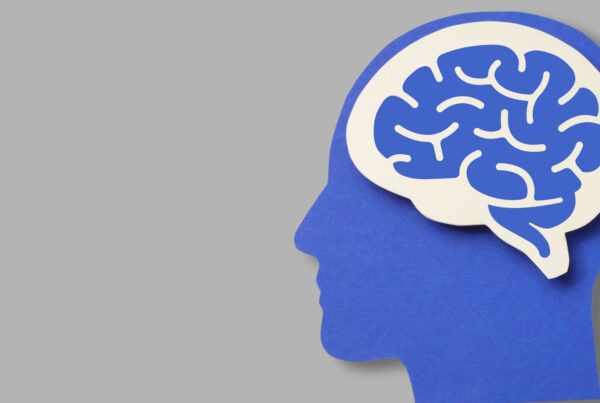Have you ever wondered why it’s so difficult to move on from a traumatic experience, no matter how much time passes? Or maybe you’ve tried therapy but still feel stuck, as if your past is constantly haunting you. The reason behind this isn’t simple – it involves how trauma affects our memory and how our brain processes these intense experiences differently from other memories. Understanding the science of trauma and memory can help explain why traditional therapy methods don’t always work as expected. If you’re in Kansas City and struggling with trauma, finding the right therapy approach, like EMDR, can make all the difference in your healing journey.
How Trauma Impacts the Brain
When something traumatic happens, our brains react in a very specific way. Typically, when we experience a challenging or emotional event, our brain processes it and stores it as a memory, often in the hippocampus, the part of the brain responsible for memory and learning. However, when the event is traumatic, the brain’s response is more intense. The amygdala, the part of the brain that processes emotions, is activated, and it often goes into overdrive. This heightened emotional reaction can override the brain’s normal memory-processing system, causing the traumatic memory to be stored differently.

Reprocess and Heal from Trauma
Instead of a clear, organized memory, trauma memories can become fragmented and disconnected. The event may not be processed like other memories that we can reflect on or talk about with some distance. Instead, traumatic memories can feel like they’re “stuck” in the brain. They may replay in bits and pieces, with intense emotions attached to them. These memories can come up unexpectedly, triggered by a smell, a sound, or even a feeling that brings the traumatic event back in a flash.
Why Traditional Talk Therapy Isn’t Always Enough
Many people who experience trauma turn to therapy to try to heal, and often, traditional talk therapy is a good starting point. In these sessions, you might talk about your feelings, reflect on past experiences, and try to make sense of everything. While talking can be helpful for some, it doesn’t always address the root cause of the trauma—the way these memories are stuck in the brain.
The brain doesn’t just remember traumatic events the way it does other experiences. These memories are often stored in a way that doesn’t allow them to be fully processed or integrated. As a result, talking through the trauma might bring up painful emotions or cause the person to relive the experience, but it doesn’t always shift the memory itself. This is why some people find that traditional talk therapy doesn’t lead to lasting relief.
In fact, when we talk about traumatic experiences, we may trigger the same emotional responses that happened when the event first occurred. This can sometimes reinforce the trauma instead of helping us move past it. So, while traditional talk therapy is useful for some, it might not be enough to fully help someone reprocess and heal from trauma.
How EMDR Helps
One approach that has shown promise in reprocessing trauma is Eye Movement Desensitization and Reprocessing (EMDR). EMDR is a therapeutic technique that targets the brain’s processing of traumatic memories. It’s based on the idea that traumatic experiences don’t get fully processed, which leads to them being stuck in the brain, causing ongoing emotional distress.
In an EMDR session, the therapist will guide you to recall the traumatic memory while engaging in specific eye movements or other forms of bilateral stimulation. The goal is to help the brain process the traumatic memory in a healthier way, allowing it to integrate and “file away” in the brain like any other memory.

Emotional Healing
What’s remarkable about EMDR is that it doesn’t require a person to talk in depth about the traumatic experience. Instead, the focus is on processing the emotions and sensations tied to the memory. The idea is that by stimulating both sides of the brain, EMDR can help the brain “reprocess” the trauma, shifting how it’s stored and ultimately reducing its emotional charge. Many people report a decrease in the intensity of their traumatic memories after undergoing EMDR therapy.
Why It’s Hard to Move On
The difficulty in moving on from trauma comes from how it’s stored in the brain and how those memories continue to influence emotions, thoughts, and behavior. Memories tied to trauma don’t fade over time in the same way that other memories do. Instead, they can become ingrained in our minds, often causing the past to feel like it’s happening in the present.
When someone is unable to move forward, it’s not due to a lack of effort. It’s because their brain has stored these memories in a way that doesn’t allow for emotional healing. This is why some people need more than just talking about the experience; they need to work through the trauma at a deeper level.
Moving Forward
If you’ve struggled with traditional talk therapy and feel like you haven’t made progress in your healing, you’re not alone. Trauma is complex, and it’s important to understand that it’s not just about “getting over it” or “moving on.” It’s about finding ways to heal your brain and process these memories so they no longer control your emotions or daily life. Therapies like EMDR offer a promising way to do that, and they can provide the support needed for long-term healing.
Whether you’re new to therapy or have been through different treatments before, it’s essential to explore approaches that specifically address how trauma affects the brain and memory. At Heartland Therapy Connection, our team of therapists are fully trained in EMDR therapy, and CBT-TF. Healing from trauma is possible, and understanding the science behind it can help you make more informed decisions about your path forward.





